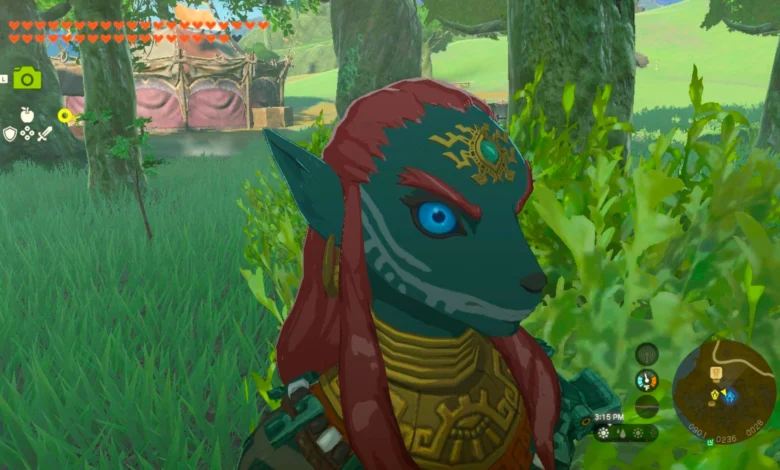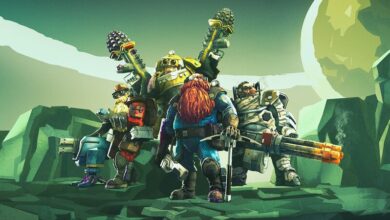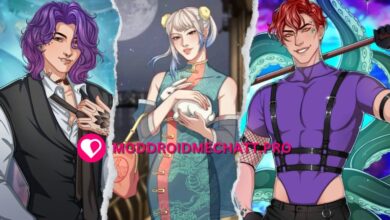The Ancient Hero’s Aspect: Unveiling the Timeless Traits of Legendary Warriors

Throughout history, the concept of heroism has evolved, but one thing remains constant: the heroic archetype transcends cultures and eras. From the heroic epics of ancient civilizations to the blockbuster movies of today, the “Ancient Hero’s Aspect” continues to shape our understanding of bravery, morality, and sacrifice. The ancient heroes of myth and legend often embodied traits that resonated deeply with their societies. Their stories have not only survived for centuries but have been reimagined, influencing modern-day heroes across various mediums, from literature to cinema.
In this article, we will explore the Ancient Hero’s Aspect, diving into the key traits that defined these legendary figures, examining their impact on modern heroes, and understanding how these age-old qualities continue to shape our cultural narratives.
I. The Role of Heroes in Ancient Civilizations
1.1 Defining Heroes in Ancient Mythologies
In the ancient world, a hero was often more than just a person with extraordinary abilities. These figures were seen as embodiments of the highest virtues that their respective cultures valued, such as courage, loyalty, strength, and wisdom. The concept of heroism varied widely across civilizations, but the common thread remained: heroes were agents of change who represented the ideals their societies upheld.
In Greek mythology, heroes like Hercules and Achilles were demigods or mortals who performed extraordinary feats, often after being blessed or cursed by the gods. These heroes were not only physically powerful but were also tested in battles of moral integrity. In contrast, Indian mythology offers heroes like Arjuna and Rama, who were not only skilled warriors but also exemplified dharma (righteousness) and moral fortitude. Meanwhile, Norse heroes like Thor or Sigurd were emblematic of raw strength, but they also carried the weight of destiny and the fight against chaos.
These heroes were also not immune to flaws; they faced personal struggles, doubts, and moral dilemmas. For instance, Achilles’ vulnerability—his “Achilles’ heel”—was a symbol of the fact that even the greatest of heroes had weaknesses. This complexity in character made them relatable and enduring, forming the foundation of what we now recognize as the Hero’s Journey.
1.2 Heroes Across Cultures: A Comparative Study
Ancient heroes vary significantly across cultures, but their role in society remains strikingly similar. Greek and Roman heroes like Heracles or Aeneas were tasked with defending their people, achieving impossible tasks, or even founding cities. Meanwhile, African heroes like Sundiata Keita—the founder of the Mali Empire—represented the struggles of the oppressed and the triumph of personal will. Chinese mythology introduced Wu Song, whose heroism stemmed from self-discipline and moral courage rather than raw physical strength alone.
The Norse heroes, such as Sigurd, were entwined with the fates of gods, and their journeys often involved quests that tested not just their physical strength but also their courage in the face of destiny. In Native American cultures, heroes like Hiawatha or The Great Spirit were considered symbols of balance, wisdom, and a deep connection to the natural world, reflecting the values of peace and unity.
Despite the variations in their stories and powers, these heroes often followed similar arcs: a call to adventure, an initiation, and a return that brought wisdom or salvation to their people. This framework is universal, reflecting a fundamental need in human societies to connect with and pass on the values embodied by heroes.
II. Core Traits of the Ancient Hero’s Aspect
2.1 Superhuman Abilities: The Power of Physical and Mental Strength
One of the defining traits of ancient heroes was their superhuman abilities. This was often displayed in feats of strength, skill, and endurance, surpassing ordinary human limits. Heroes like Hercules, with his twelve labors, or Beowulf, who fought the demon Grendel with his bare hands, showcased abilities that were both awe-inspiring and symbolic of their connection to the divine or cosmic order.
Yet, physical strength was not the only form of power these heroes wielded. Mental attributes such as wisdom, strategic thinking, and courage under pressure were equally important. In Greek mythology, Odysseus’ intelligence and cunning were just as crucial in his journey home as his physical strength. Similarly, Arjuna, the great warrior from the Indian epic Mahabharata, was revered not only for his archery skills but also for his ability to make tough ethical decisions in the face of battle.
These heroes often stood as figures who balanced physical might with mental resilience, making them well-rounded symbols of strength in every sense.
2.2 Morality and Virtue: The Hero’s Code
At the core of every ancient hero’s identity was a strong moral compass. The hero’s journey was not just a test of physical ability but a quest for virtue—justice, honor, loyalty, and sacrifice were some of the foundational elements. Heroes like Achilles and Rama faced tests of character, where their ability to make the right moral decisions was just as critical as their combat prowess.
The heroic code in these mythologies often focused on sacrifice for the greater good. For instance, Prometheus, in Greek mythology, gave fire to humanity at great personal cost, facing eternal punishment for his selflessness. Similarly, Arjuna in the Mahabharata grappled with dilemmas about war, duty, and the destruction of his family, reflecting the tension between individual desires and the greater good.
This moral journey is a key reason why these stories have remained so compelling. They offer not just a blueprint for physical heroism, but also moral lessons on how to navigate life’s challenges with integrity and purpose.
III. The Evolution of the Ancient Hero’s Aspect into Modern Times
3.1 How Ancient Heroes Influence Modern Fiction
The ancient hero’s archetype has had a profound influence on modern fiction, from literature to film and television. The traits that defined these ancient figures have been reinterpreted and reimagined in various ways, allowing the ancient hero to remain a powerful symbol in contemporary culture.
For example, the Marvel Cinematic Universe (MCU) draws heavily from ancient myths, especially the Norse mythology of Thor. This modern reimagining portrays Thor as a superhuman warrior with godly powers, but it also explores his struggles with destiny, responsibility, and his inner flaws, aligning with the complex moral dilemmas faced by ancient heroes. Similarly, Wonder Woman, rooted in Greek mythology, presents an ideal of strength and virtue akin to figures like Athena or Artemis.
In literature, heroes like Harry Potter or Frodo Baggins from The Lord of the Rings echo the archetypal hero’s journey. Their stories reflect timeless themes of sacrifice, growth, and triumph over evil, drawing directly from the ancient stories that still resonate in the collective human consciousness.
3.2 The Hero in Modern Society: Continuity and Change
While the ancient hero’s traits have persisted in modern times, today’s heroes tend to be more flawed and multidimensional. Unlike their ancient counterparts, who were often idealized symbols of perfection, modern heroes such as Batman or Iron Man are deeply flawed individuals, reflecting the complexities of human nature. Their moral struggles, internal conflicts, and imperfections make them more relatable to contemporary audiences, who are seeking not just perfect heroes but those who are capable of growth and redemption.
In contrast to the idealized ancient heroes, these modern figures often showcase vulnerability, questioning their role in society, and wrestling with their own sense of purpose. This shift may reflect a more nuanced view of heroism, where personal flaws and growth are just as important as triumph.
Conclusion
The Ancient Hero’s Aspect has had an undeniable impact on shaping modern-day conceptions of heroism. From physical strength to moral integrity and from personal sacrifices to epic journeys, these heroes continue to inspire us. Whether ancient or modern, the core traits of heroism—strength, courage, morality, and sacrifice—remain central to what it means to be a hero.
Today, we continue to look to ancient heroes for guidance and inspiration, using their timeless stories as blueprints for navigating our own moral and existential challenges. As we face a rapidly changing world, the hero’s journey—whether ancient or modern—remains a powerful symbol of hope, courage, and resilience in the face of adversity.




